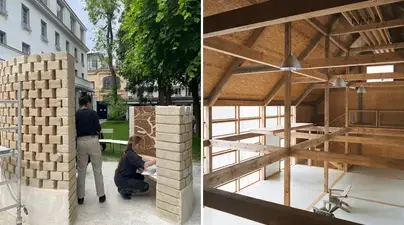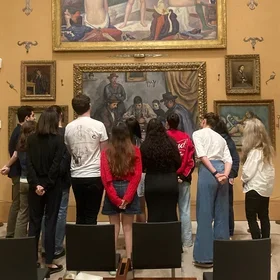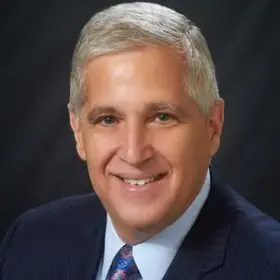How do you teach architecture to students who most likely won’t be architects? Lynnette Widder (‘85BC, ‘90GSAPP), professor of professional practice in the Sustainability Management (SUMA) program, uses her expansive background in architecture and environmental practice to do just that. Her research focuses on supporting sustainable and equitable practices in architecture. In 2022, she published the book Year Zero to Economic Miracle: Hans Schwippert and Sep Ruf in Postwar West German Building Culture, an examination of the work and legacy of two influential West German architects who shared “political, religious, and professional allegiances in the postwar years.”
In our interview, Widder discusses her history with Columbia, how she became interested in teaching sustainable architecture, and why she is excited to work with students in her sustainability classes.
A Return to Columbia
Widder attended Barnard College to pursue her bachelor of arts degree and completed her graduate studies at Columbia’s School of Architecture in 1990. She went on to teach at Cornell University, Parsons School of Design, and University of British Columbia, among others. Then, after fifteen years of teaching at the Rhode Island School of Design, in 2012 she made the decision to return to Columbia to teach in the School of Professional Studies Sustainability Management program.
Excited about the idea of returning to the place that laid the foundation for her career and academic life, Widder saw an opportunity to teach architecture to people who, unlike the students she’d been teaching at the Rhode Island School of Design, would likely not work as architects. The difference, she says, was the chance to convey “the knowledge and experience that I have gained through teaching and practicing architecture to a group of people who would be able to effect change in those areas” as clients and advocates focused on sustainability.
One course she taught initially was a Building Energy Workshop, in which SUMA students collaborated with Columbia facilities management to do an energy analysis of a different campus building each year. Student groups were challenged to “come up with innovative, design-based remediation strategies” to improve energy performance, comfort, and architectural clarity.

Left to right: Lynnette Widder and Lola Ben-Alon, assistant professor at Columbia’s Graduate School of Architecture, Planning and Preservation, working on a raw-earth pavilion for Columbia’s Global Center in Paris; the interior of a full-timbered low-carbon building finished in 2011 by aardvarchitecture, the firm that Widder and partner Christian Volkmann ran. (Photo by Thad Russell)
Advice for Students
When asked about how she chooses which projects to work on for her capstone and community resilience classes, Widder repeated the saying “Chance favors the prepared mind.” “If you are attentive to learning about the things that interest you,” she said, “when an opportunity or a collaborator crosses your path who shares these interests, you can identify it and take advantage of it.” This is, she added, no less true for students and practitioners, a reason that her courses include both high-level considerations and practice-ready skills.
Going beyond “Just Architecture”
In her work on architectural history, Widder has brought her knowledge of practice and sustainability to multiple projects. She says that understanding “what it actually takes to make a building” is central to establishing architectural history as relevant to sustainability. She adds that “the point is not only the design intentions and the finished building, but it’s understanding what happens between those two moments in the history of any building.”
In recent work, she has expanded that approach to include more precise assessment of the embodied resources that go into making buildings and infrastructure. As she notes, if 80 percent of the built environment that we’ll inhabit in 2050 already exists, then knowing what that represents is central to sustainable practices.
How SPS Students Stand Out from the Rest
Over the course of her more than 20 years of teaching at architecture schools in the U.S., Canada, and Europe, Professor Widder could “walk into a classroom and, based on the course number, know what the students already knew and what I had to teach them.”
With her Sustainability Management courses at Columbia SPS, however, she says that “I have no idea who is sitting in the room when I walk into an SPS class, because student knowledge levels are very diverse. They’re in school for something specific, but they’re ready to be challenged to do things they’ve never done before.”
It is this diversity of perspective and risk-taking spirit that attracted her to SPS. “On one hand, they’re building toward a career,” she says of her students, “but on the other hand, I went to Columbia instead of going anywhere else because I wanted to be surprised. I want to learn things I’m not expecting to learn. That’s especially true of SPS students.”
Learn about Widder's other projects with Columbia:
Planting Stories: Seeds of Diaspora - Implemented in New York City by Columbia's School of Professional Studies, the School of the Arts, the Department of Latin American and Iberian Cultures, and Columbia Artist/Teachers, in partnership with the Humanities Institute at New York Botanical Garden and Columbia Secondary School
Earth Networks: Bridging Scientific and Artistic Approaches - Columbia Climate School
About the Program
The Columbia University M.S. in Sustainability Management program, offered by the School of Professional Studies in partnership with the Climate School, provides students cutting-edge policy and management tools they can use to help public and private organizations and governments address environmental impacts and risks, pollution control, and remediation to achieve sustainability. The program is customized for working professionals and is offered as both a full- and a part-time course of study.


